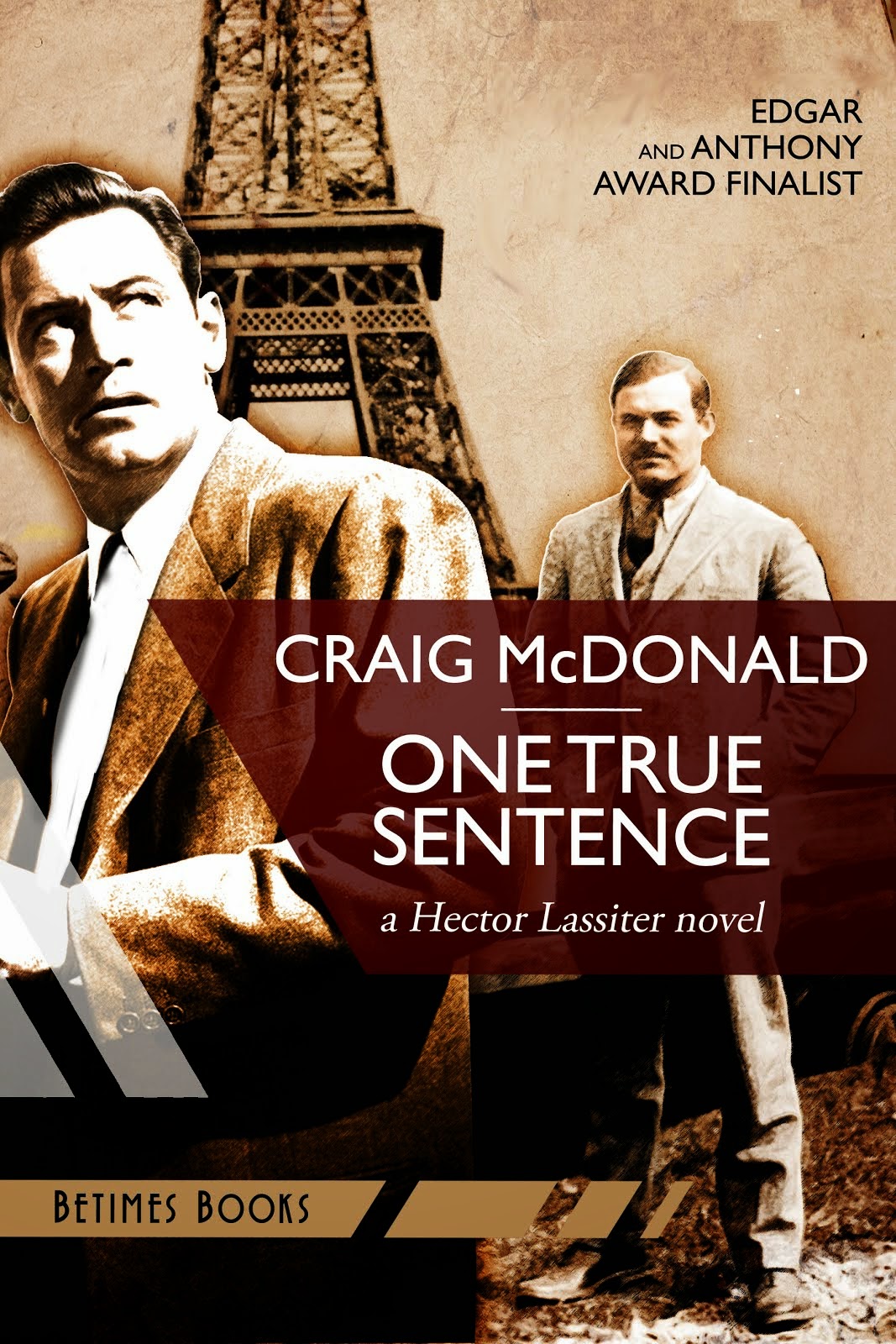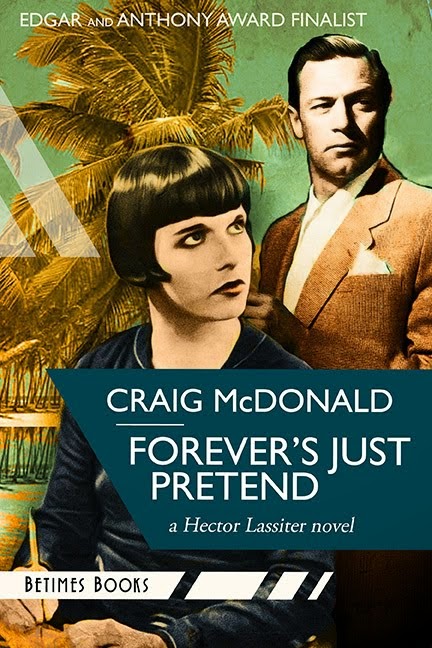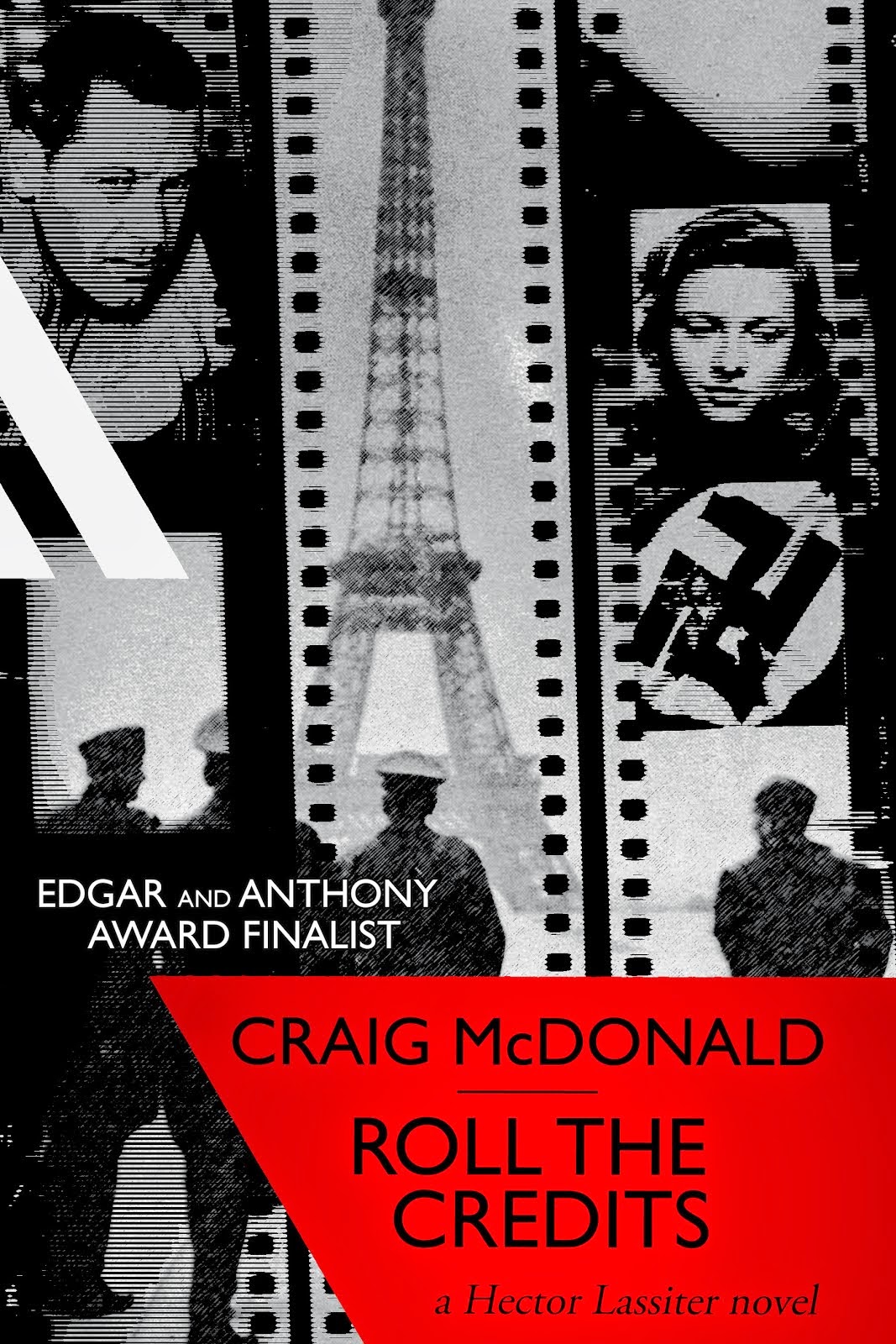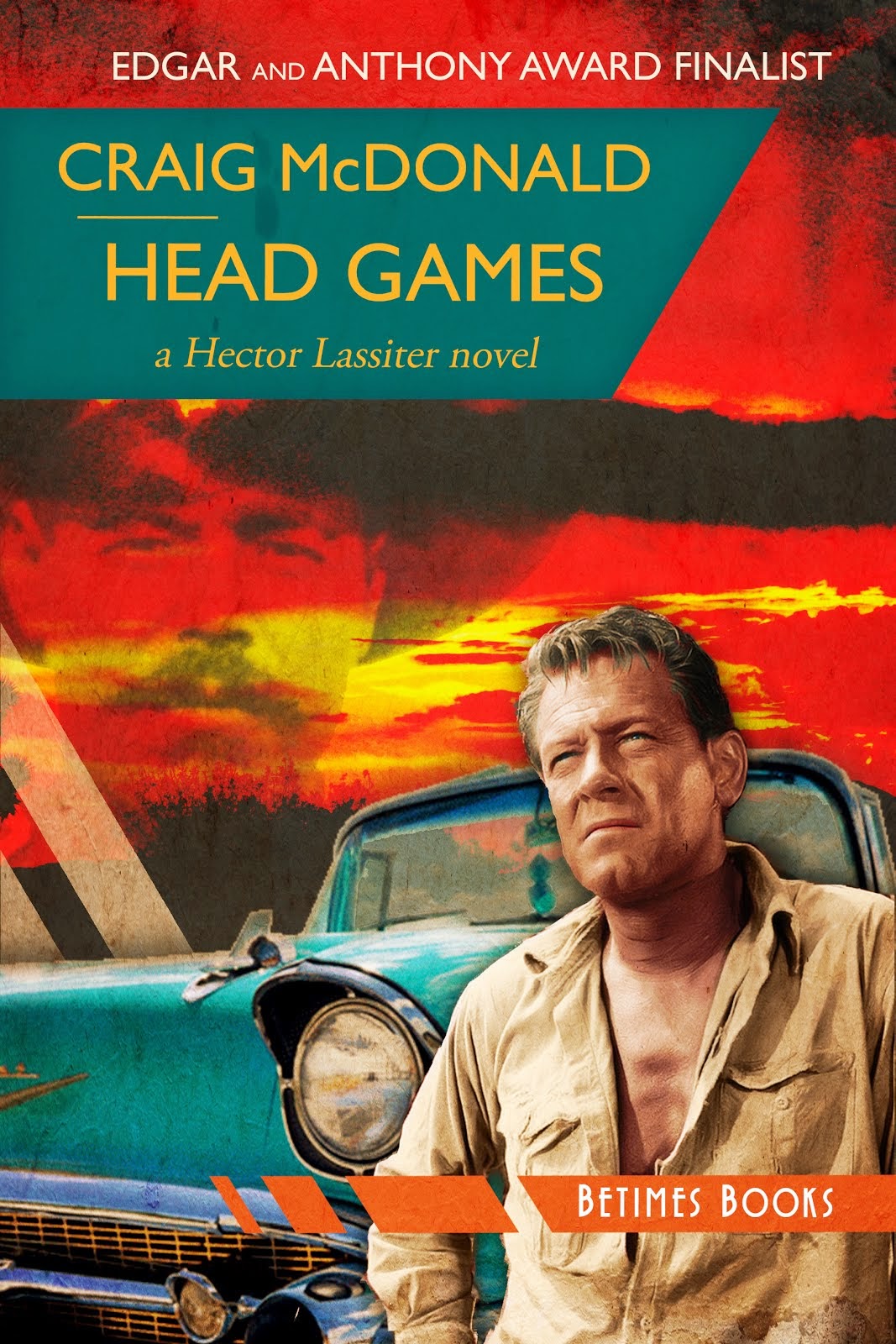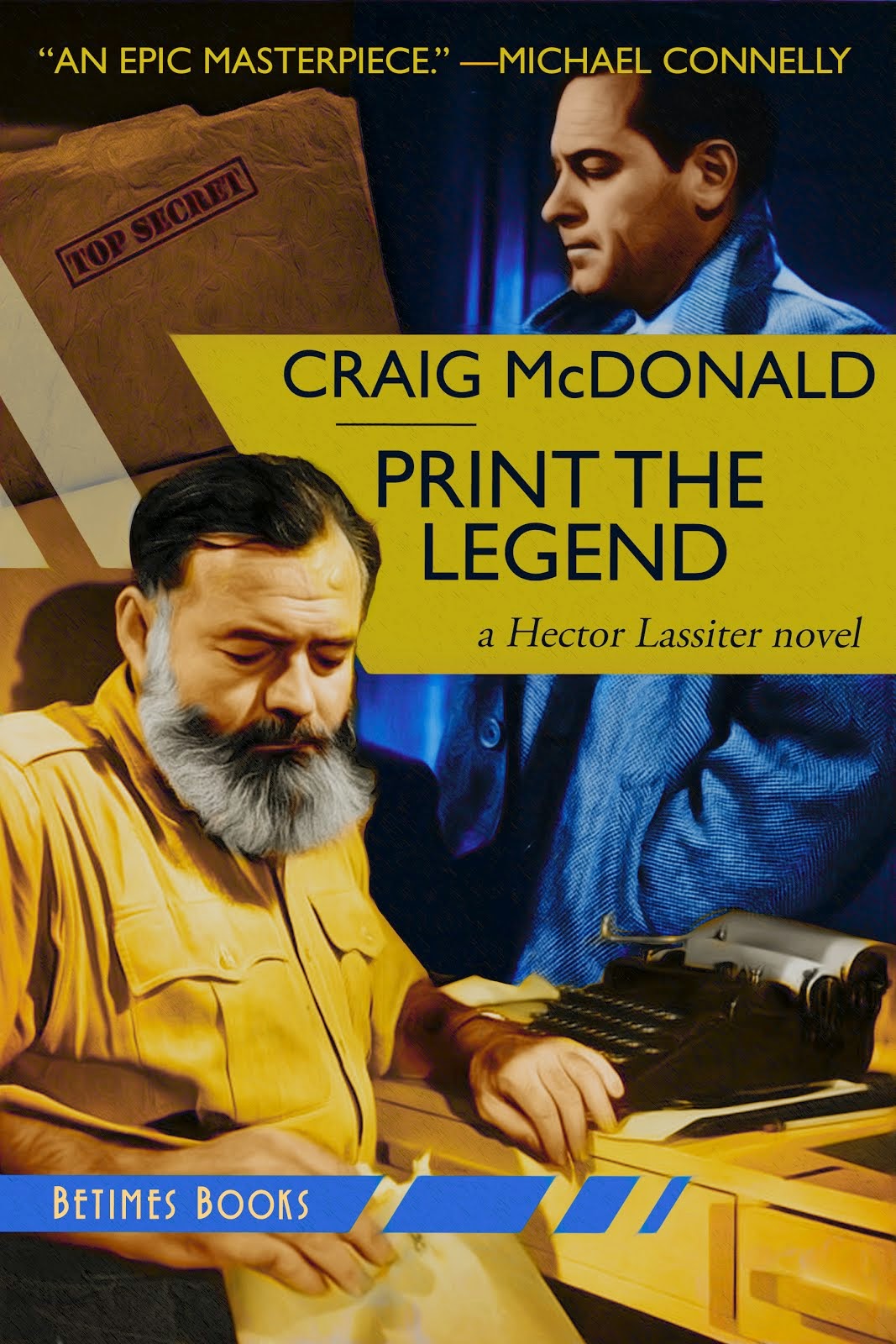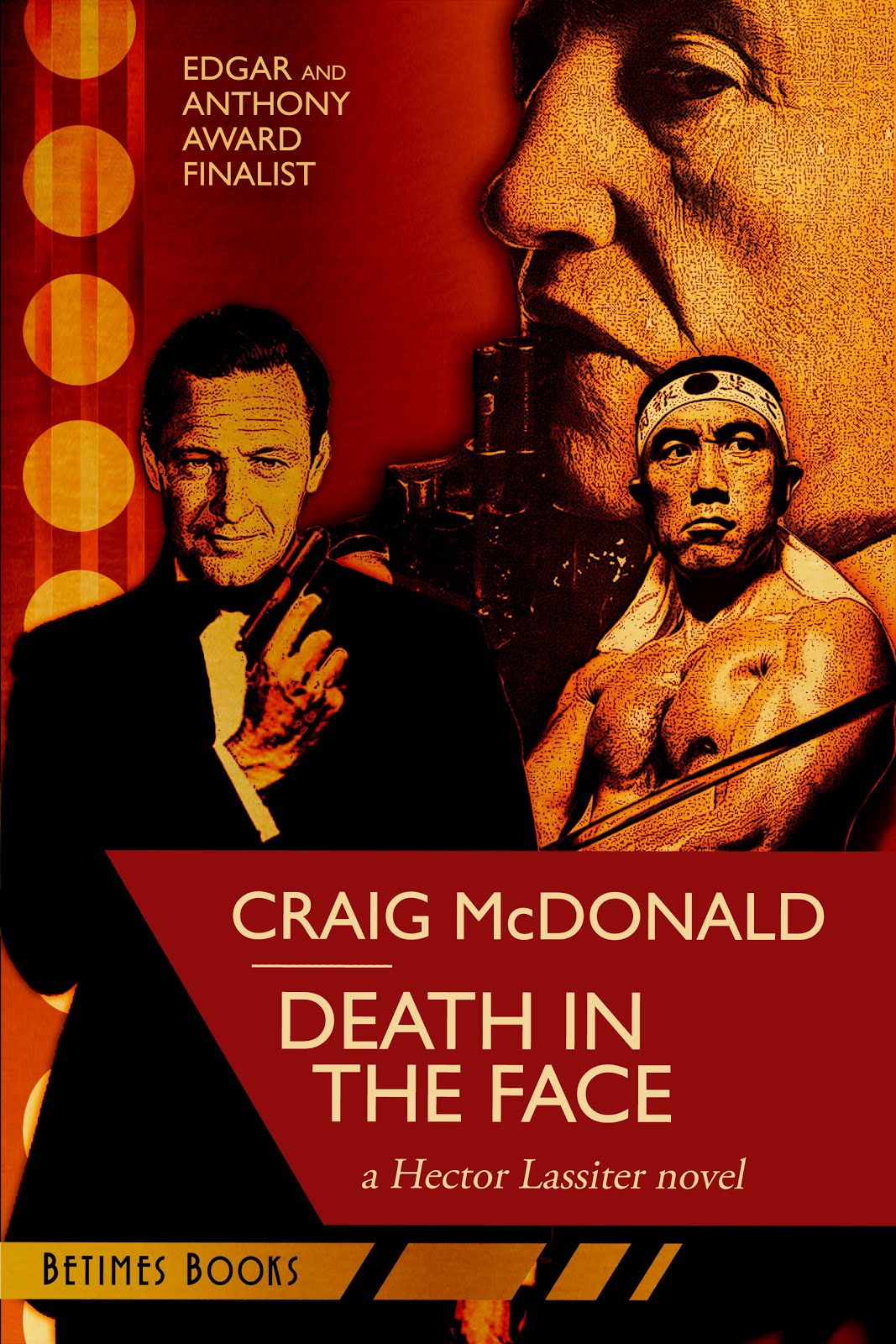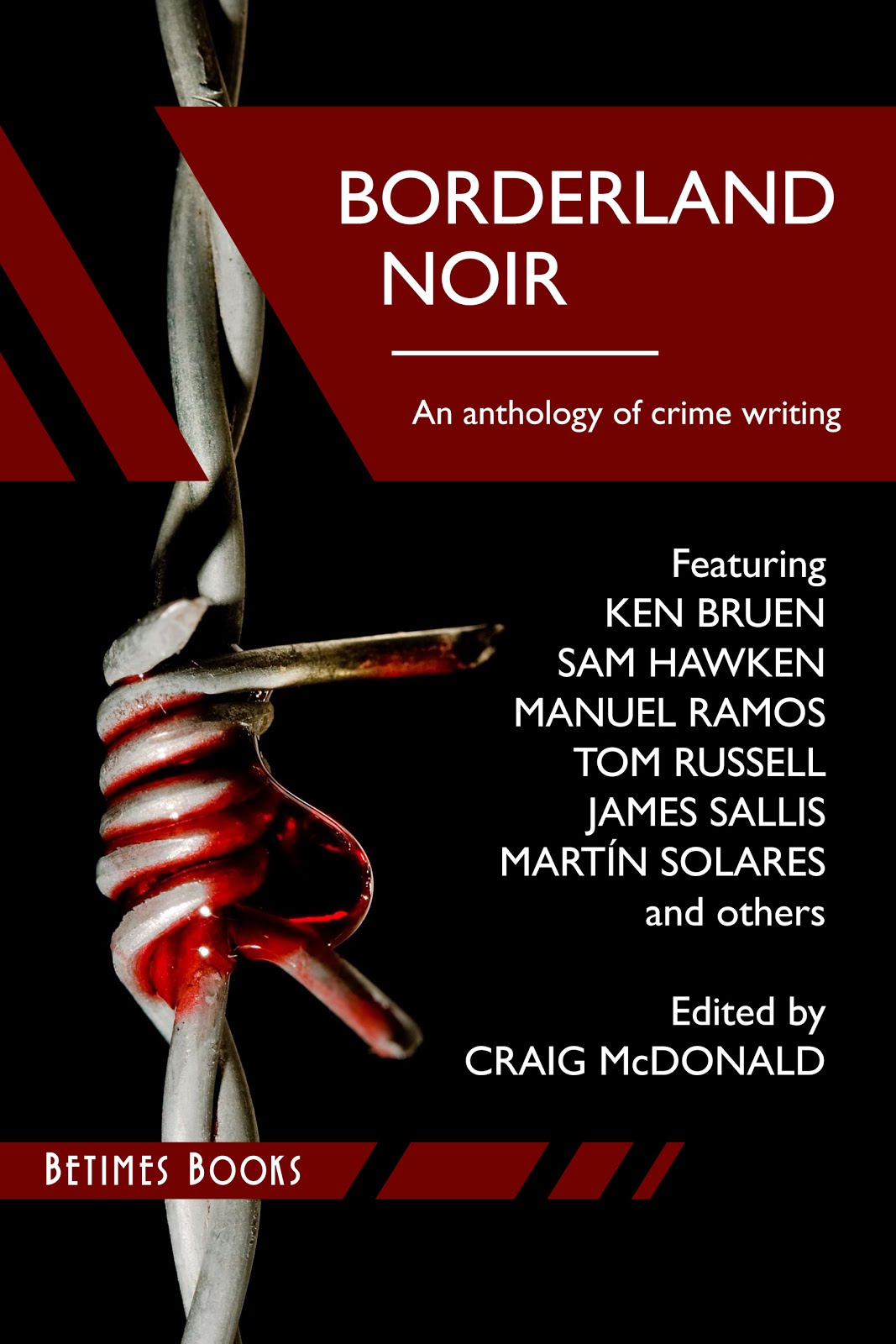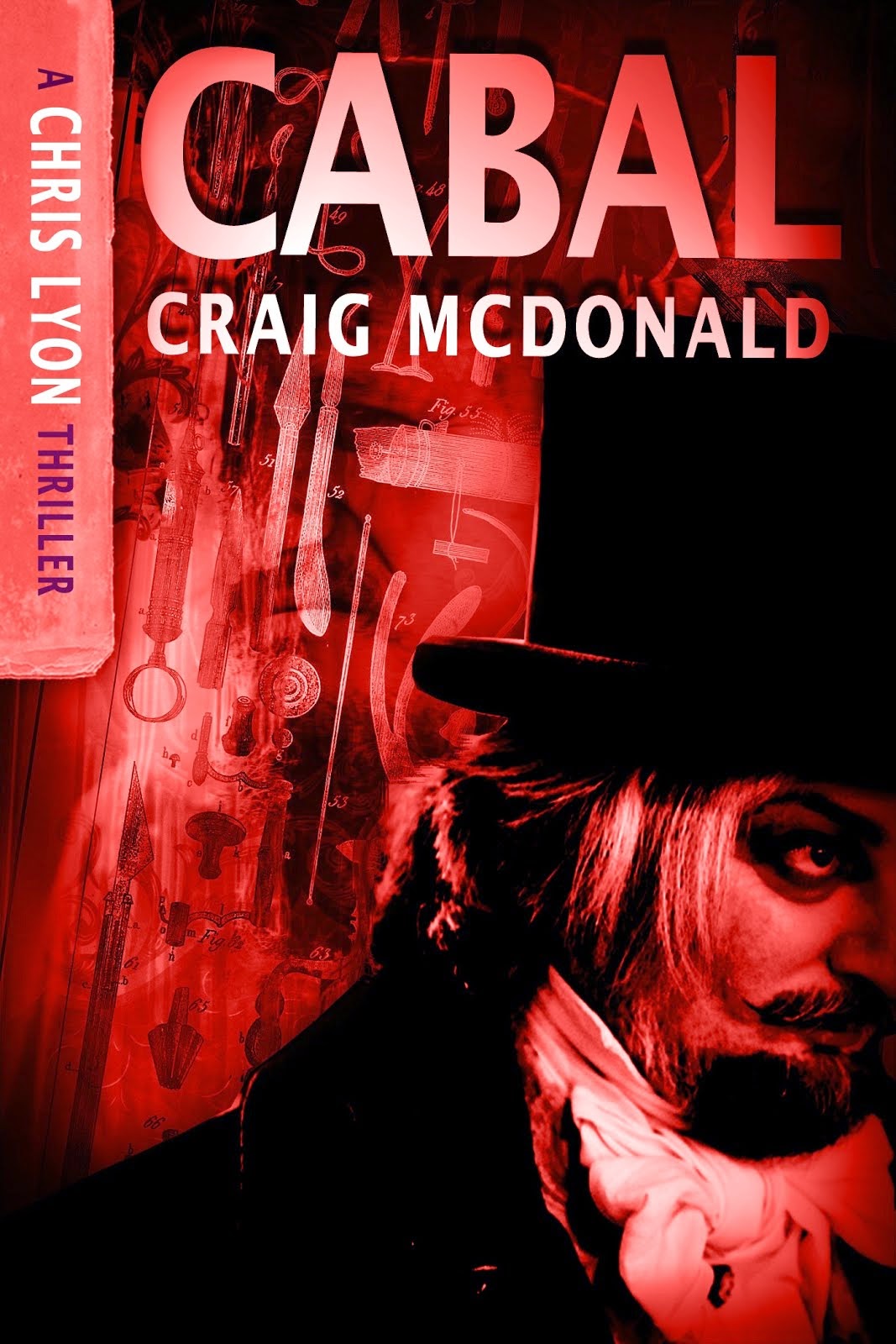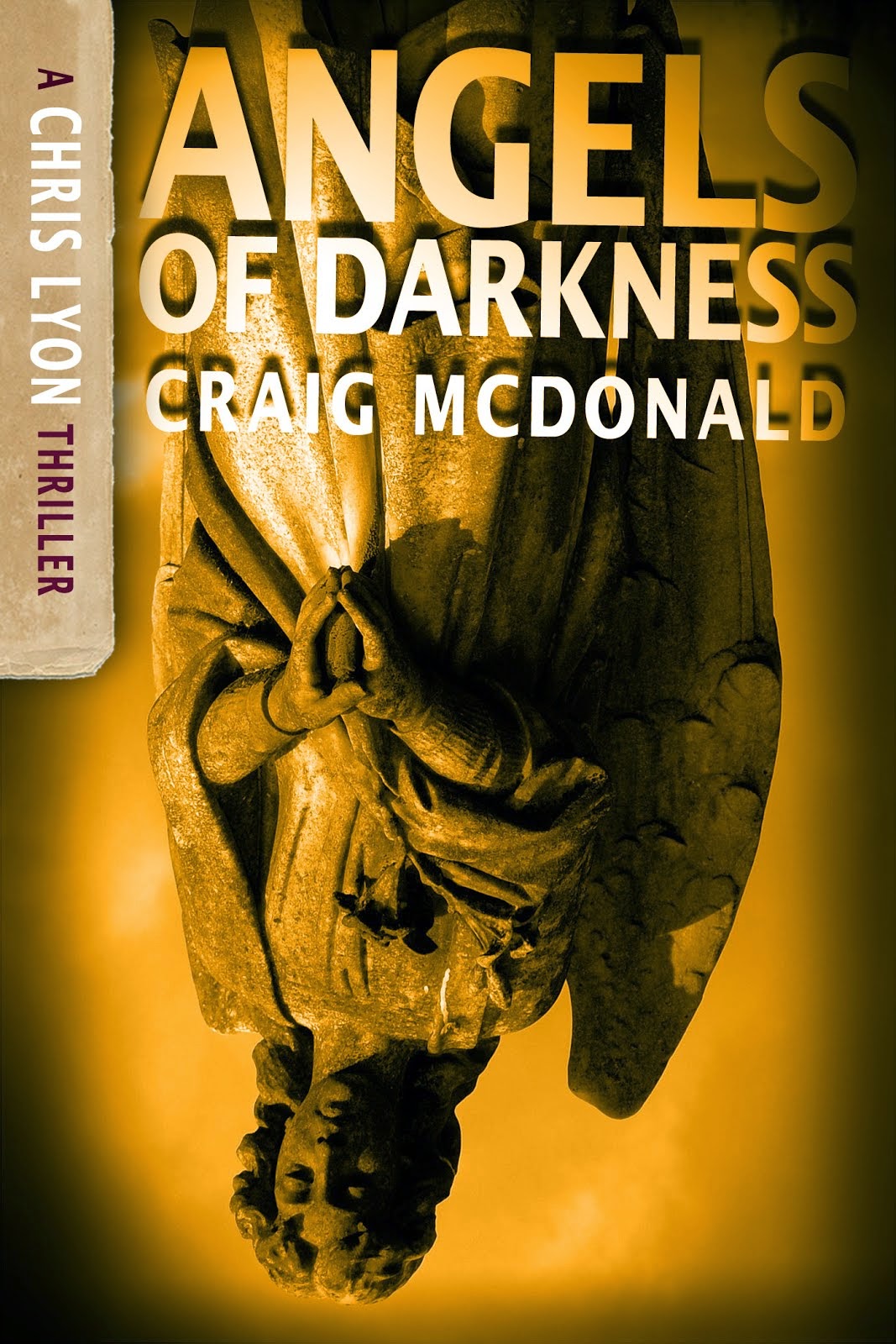I was stunned yesterday to get a text message that
Stephen J. Cannell had died. Cannell's work, particularly The Rockford Files, had a tremendous effect on my own writing.
In tribute to Mr. Cannell, the following is a long interview I conducted with the producer/screenwriter/novelist in 2003, taken from my second collection of author interviews,
ROGUE MALES.

STEPHEN J. CANNELL:
HOLLYWOOD TOUGH
(JANUARY 5, 2003)
Stephen J. Cannell boasts a staggering résumé: screenwriter, producer, director, mogul, actor and best-selling novelist.
His success as a writer is still more stunning to those in the know:
Cannell was an undiagnosed dyslexic whose condition went largely undetected until the age of 35. By the time that diagnosis was made, Cannell was already one of Hollywood’s hottest screenwriters and producers.
His reading/writing disability apparently hasn’t affected his output — his screenwriting credits run to the four figures.
The list of TV shows he has created or co-created is staggering: The Rockford Files, The A-Team, Baretta, Toma, The Commish, The Duke, Greatest American Hero, Hardcastle & McCormick, Hunter, Baa Baa Black Sheep, Silk Stalkings, Renegade, Wise Guy, The Hat Squad, Tenspeed & Brownshoe, Riptide, 21 Jump Street, Unsub, Sonny Spoon, Stingray, and the list goes on….
His big break came in the 1960s, when he landed a job as head writer on the Jack Webb-produced series Adam-12, starring Kent McCord and Martin Milner as a couple of LAPD patrol officers.
That gig brought Cannell into direct proximity with the prickly personality of Webb. Cannell tells a story of spending several sessions working with Webb and “Joe Friday’s” daily tendency about the same time each afternoon to lash out at Cannell without provacation. Finally fed up, Cannell called Webb out: “Say that again Jack, and you better get your hands up, because I’m coming at you.”
Cannell needed to be tough, going toe-to-toe as he later would with scrappy personalities like Robert Blake, Robert Conrad and George Peppard.
In recent years, Cannell has turned his attention to writing novels, determined to fulfill the unlikely goal he set with a single word selected to describe himself in his high school yearbook: “author.”
Cannell has since moved to the top of the best-seller lists with several highly-praised novels.
Several of his books are currently in development for screen adaptation, as are several of his hit TV series, including The A-Team, 21 Jump Street and The Greatest American Hero.
Cannell and his wife of 35 years, Marcia — his high school sweetheart — have three children and what certainly must stand as one of the most enduring marriages in Hollywood.
Cannell spoke with me from his Los Angeles film production office, and again at a stop along his U.S. book tour.
***
When you were starting your career as a screenwriter, there were still several westerns and medical shows on the television landscape — what led you to the crime genre?When I started writing, I just wanted to write anything that I figured I could get a job writing. I was willing to write half-hour comedies. I wrote some half-hour spec scripts. I wrote a Batman script on spec that I couldn’t sell. I was a very disciplined writer and I still am, so I would write for five hours a day, five days a week, and then on Saturday and Sunday I’d write all day long, because I had a regular job. I’d come home after working for my dad (Joseph K. Cannell, the namesake for Jim Rockford’s father, Joseph “Rocky” Rockford), driving a furniture truck, and I’d get home at 5 o’clock and write until 10 p.m. every night.
I was specing-out feature film scripts and TV scripts of all different varieties. What ended up happening was I started getting employed in the hour drama. The first company that put me under contract was Universal. I was doing Adam-12. I was the head writer on that show. There was a reward out for Universal’s sense of humor in those days. There were no comedies on that lot. Nothing. They were the hour-drama shop. We had Kojack, Rockford, Baretta and just every show, the Mystery Movies — Columbo, McCloud, MacMillian and Wife. It was all dramas, even though some of them had a light take to them, like The Rockford Files did.
Then, what happened was, my success there was pretty major, which surprised the hell out of me. But then you get sort of defined by your successes. The idea that I would sit down and write Cheers, or something like that — even though I would have loved to have tried — they all go, “No, no, we don’t want you to do that.” I used to go to the networks all the time and pitch shows with female leads. I’ve always wanted to do a show with a female lead. They wouldn’t let me do it. They just kept pushing me back toward what I had already done. Even though I ended up with shows like Silk Stalkings, where “Rita” was a great female character, or Hunter, where “DeeDee” was a great female character, basically they were male-driven kinds of shows.
To this day you haven’t created a show with a female lead?I wrote a couple of pilots over the years, but you know what? They didn’t get bought. One of the things that happened in the latter part of the ’90s, going into 2000 and on, was that the networks finally got hip to the fact that women were a larger percentage of their audience than men. The reason for that was men were being drawn off by ESPN and cable channels that were offering sports. So you had a higher degree of women watching television. Then, slowly, the female-lead drama began to become an important staple of network programming, but prior to that, they weren’t doing it.
I find it interesting that Adam-12 was your first major writing job in Hollywood. I tend to associate you with projects that have some overt or covert sense of humor. Adam-12 always struck me as perhaps the most humorless show on TV.
Yes and no. It’s actually not so. One of the things that we used to do on Adam-12 was — it was a great, by the way, I hasten to say — it was a great place to start. They were half hour shows, and we would write these what we called “spine stories.” The spine stories were something that was generally going on between Reed and Malloy, the two principal characters. You’d hit it three times basically during the half-hour. An example might be that Reed’s going back to college, and Malloy isn’t sure that this is the right thing and that’s part of it. So you’d have that spine story. Then there would generally be some major crime story, like some guy holding up 7-11s that they end up catching in the last reel of the picture. Then there were a couple or three of these little pieces — a lady calls and her cat’s in a tree and she’s got to get him down. These kind of silly little things that were like the comedy things.
What ended up happening on Adam-12 was that those things ended up being played very broad. The woman would have curlers in her hair and she would really be this silly kind of caricature-type of person. That was sort of the way the show was being done. When I got there I decided, “You know what I’m going to try and do with these comedy bits, if I can?” — almost like in a writing class, where you’d come on a character in page 7 and you’d be out of the character on page 8 or 9. But that character had to exist during those three pages or four pages and be funny and at the same time, real. I sort of developed this technique of saying, “Every character has to have a yesterday and is going to have a tomorrow.” What I noticed with a lot of these scripts that I had seen prior to my coming in there was that they were just played for laughs. I decided if the woman comes out there, and her cat’s in the tree, instead of it being some dopey thing about the cat being in the tree, I’d have this lady be late for her night school class in law. So there would be another energy in the thing beyond just, “Oh my cat’s up in the tree! Can’t you boys get it down?” It turned out to be really good for me, because, when I started doing shows like The Rockford Files, I gave them a yesterday and I gave them a tomorrow and that was all part of what I was doing on Adam-12. So it was a very good learning process for me.
Turning to your books, you’ve mentioned Michael Connelly as a writer you admire.Yeah, I love him.
Connelly, Dennis Lehane—Another of my favorites. In fact I was just filling out a thing for West Coast Crime, where I’m going to go, and they asked my favorite authors and I put Dennis and Michael, and Nelson DeMille and I like Jefferson Parker…I thought Silent Joe was a cool book.
Connelly and Lehane started with recurring characters, or series, then moved into stand-alone novels in order to recharge, or because the characters were getting a bit stale for them. You’ve tended to go the other way, starting with stand-alones and now your recent books have centered on this single character, Shane Scully. Was that a conscious choice?What happened was, when I started, I told my publisher, “I don’t want to write a series,” because I had been writing series television for 30 years. I thought, “God, the fun of writing these novels is that I can create a whole new world, every time.” Eventually, I wrote The Tin Collectors (featuring Shane Scully’s debut). It’s interesting what makes an author select an area to write in. You know you’re going to be writing a book for months, and you want to pick something that is going to be exciting to you. I also want to pick something that is going to stretch me, a little bit, and I want to pick something that hopefully I haven’t written before, a relationship I haven’t written before. One day I was sitting around thinking, “You know, I’ve never really done anything on Internal Affairs.” I’ve written about Internal Affairs, but I don’t know my ass from second base about Internal Affairs.
They’re an easy heavy for a crime writer.Exactly. Yeah, the “shoe flies,” the cops who go after cops. My inclination — my feeling — was, well, you know, they’re kind of assholes who don’t like the department and who don’t like cops, negative stuff like that. That was my kind of stereotypical view and that’s basically the way they are written in most people’s novels. Even in motion pictures, whenever they are portrayed. So I decided I’d go down to Internal Affairs in L.A. The Internal Affairs Division for the LAPD is actually headquartered in the Bradbury Building. The Bradbury Building is this incredible building that was built about 1910. It almost looks like an old Louisiana courtyard with wrought iron railings and an interior courtyard that has been glassed-over and these old, filigreed, wrought iron elevators. It’s one of the most beautiful buildings. We shoot it all the time. I’ve shot it a half-a-dozen times, usually for thirties private eye-type shows.
I called up to find out where Internal Affairs is located, and, lo and behold, they’ve rented the top three floors of the Bradbury Building. So I go down there, and one of the things about LAPD is it is open, it’s an open proceeding, unlike a lot of others. I walk in and I’m instantly recognized. I’m sitting in the back of what’s called a Board of Rights hearing. They want to throw me out because they’re afraid I’m there to write about it, but the commander — the guy who’s running the Board of Rights hearing — says, “No, it’s an open hearing, Mr. Cannell has a right to be here.” So I was trying to convince these guys that I was thinking about writing a book about Internal Affairs.
Well, I ended up spending two-and-a-half months down there. Anytime I had a half-a-day off or I wasn’t doing something, I would go down there. I showed up at Internal Affairs probably 50 times over the next couple of months. Sometimes I’d just go for two hours over lunch. I got to know all of the advocates and all of the defense reps and I wrote this book called The Tin Collectors which is about Internal Affairs. I thought it was going to be a stand-alone. Then I was having lunch one day with a friend of mine who used to be the Special Agent in Charge of the L.A. office for U.S. Customs. I hosted a TV show for a year called U.S. Customs Classified. I was the “Robert Stack” of that show — a nationally syndicated show. I got to know this guy, Bill Gately, who was the Special Agent in Charge of the L.A. office. He’s a really cool character. I actually patterned the cop in Final Victim after Bill Gately.
We’re having lunch one day and he starts to tell me about the “parallel market.” The parallel market is Fortune 500 companies using their product to launder Colombian drug cash. The more he tells me about this, I couldn’t believe what was happening. This has been happening for 25 years. The Federal government knows the Fortune 500 companies are using their product to launder this Colombian drug money. And, now, al Quada is doing the same parallel market laundering for drug money out of Afghanistan. The more I thought about it, I thought, “You know, I could use these same characters from The Tin Collectors, and I could have Shane Scully tackle this case. Instead of doing it as customs case, he’ll do it as an LAPD case.” So I went and pitched it to my publisher and they said, “Will you please write a series? Please!" And I said, “Look, I don’t want to write a series, but I’ll write a second book.” Then The Tin Collectors became a New York Times bestseller, and so did Viking Funeral, and I got trapped.
Now you’re on to book number three.I have finished three, Hollywood Tough.
Are you going to do a fourth?Yeah, because, you know what? People like him. But, what my publisher has allowed me to do is, well, I’m very disciplined. I’ve been writing two novels a year, anyway. I was starting to pile novels up. I had three completed novels that actually didn’t yet have publication dates. One is a stand-alone called Runaway Heart, that will be released by St. Martin’s in June (2003). So we’re going to do two novels next year. I’ve also written a stand-alone called Love at First Sight, which will probably come out a year from June. So now I’m doing two novels a year. I’ll have my January “Shane Scullys,” and my off-season stand-alones, and I’ll do that until I fall over, I guess. I do enjoy stand-alones, but I’ve been having fun with Scully. I’m getting ready to write another Shane Scully. I’ve sort of plotted it. I know what the story is, but I haven’t sat down and written an outline yet, which I’ll do when I get back from my tour. It’s a great idea for a story, called Vertical Coffin. A “vertical coffin,” by the way, is a doorway.
I was about to ask.In police jargon, any doorway is often referred to as a “vertical coffin,” because when you go through them you can die. This particular vertical coffin is a very specific killing that takes place in a doorway. So, I’ve got a good story for that, and, Hollywood Tough, again, was a story that I’ve wanted to write about the underworld trying to take over the below-the-line film industry.
Yes, again, I found it interesting that only now, several novels in, are taking on your old Hollywood milieu.Well, it was just a great story. Back in the 1930s, Al Capone and Meyer Lansky and those guys actually controlled the IATSE, which is the organization of below-the-line film unions in Los Angeles, for about five years by running off all the other candidates and getting one of the business agents to run for president. They basically controlled the I.A. The idea was that they (the mob) would control IATSE, then they would cut special deals with producers and let them shoot on the low budget rate card, in return for which they would get ownership of the backend of the pictures. Well, that’s what this guy (the villain of Hollywood Tough) is trying to do. He believes that by controlling IATSE, he will eventually get his hands around the $70-billion California film industry, which would make him one of the most powerful men in California. In fact, this mobster would have the power to call a strike and literally shut down the fire and police departments, because we are that dependent on taxes from the entertainment industry. A guy actually came out here with the intention of doing this about ten years ago. The police department found out about it, and ended up setting up a phony movie company to sting him on a RICO charge. Which is what Shane Scully does in this novel. He ends up producing this film which gets out of control. He’s on this horse that he can’t ride. He has to go back to the LAPD and say, “I need another $150,000...I need another half-a million.” They want to keep this guy out of town, but, at the same time, when they get over a million dollars in pre-production in this movie, it’s pretty funny.
It is pretty funny, and it comes across as funny, but it doesn’t come across as a particularly fond portrait of the industry. Or, at least, it didn’t to me.If you want to talk about the excesses of Hollywood, you look at something like the Twilight Zone (1983) film and, I’m blanking on the name of the director…
John Landis?Yes, John Landis. Nobody says “no” to these guys. I think it’s important for people to hear “no” occasionally. If you think you can have anything you want, then pretty soon you’re screaming at a helicopter pilot, saying “Lower, lower, lower, and—”
And Vic Morrow is dead?They forget completely there are children and Vic Morrow is under there and you blow a charge and bring a ’copter down and it’s bad behavior. It is bad behavior.
You owned your own production studio and created many, many shows, yet never found yourself caught up in those kinds of excesses?I owned the 38 shows that I produced from my company. Actually, I love Hollywood. My experiences in this industry have been charming, in a way. I find show business people to be fun and entertaining. There is no anger in me at all. But there is a high degree of lunacy in show business. It’s lunacy that is created by the fact that it is not a real world. There is celebrity. You know, people are actually really, really concerned about who Madonna is (sleeping with). I say, “Who cares?” There are articles written about it every day — cover stories in magazines. Pretty soon, the people in this industry start to take themselves a little bit too seriously. It’s a very seductive thing. It’s happened to me, too, and I’m pretty grounded. I’ve got really great parents and, fortunately, I’ve also surrounded myself with people who will grab me by the throat when I start to act that way and go, “What are you doing?”
You also have maybe one of the record-long marriages in Hollywood.I do. And my wife is certainly one of the first to stomp on me if I start to wander around and lose control. She says, “Listen, I remember you when you had acne,” because we were dating in the eighth grade. It’s great to have people around you who are not impressed by you. Even though I’d love to have people around me read every script that I wrote and tell me that it was great and actually have them be great, the greater problem was to have them tell me it was great if it wasn’t. I’ve learned over the years to find true critics, who come in and say, “You know, you may want to take another look at this — it isn’t as great as you think it is.” And then if I fire that guy or gal for having that opinion, then I’m liable to fall prey to this very thing you see happening with these characters in Hollywood Tough. But the whole thing with that Neural Surfer movie (in Hollywood Tough), it isn’t that far off the truth. Look at Battlefield Earth (the 2000 science fiction film starring John Travolta and based on a novel by the L. Ron Hubbard, founder of the Church of Scientology, of which Travolta is an adherent). Nobody would tell John Travolta that that was a piece of shit, you know? That thing had been around forever, but he was determined to have El-Ron’s piece brought to the screen. I’m not saying that there is anything wrong with John Travolta having that belief and that love for the material, but, if he’s wrong, somebody needs to tell him.
When you are writing a script for Rockford, for instance, I assume you are visualizing James Garner and hearing his voice delivering the dialogue. Do you “cast” your characters in your novels, so to speak? Do you have an actress or actor in mind when you shape the characters?No, never do it.
You mentioned a friend who served as the model for a character in Final Victim — the character of “John Lockwood,” I take it —God, you have read the books, haven’t you?
I’ve enjoyed the hell out of ’em….Well, yeah, Bill Gately was my take on John Lockwood. But it was just because of Bill, who was one of these guys that really, really was a guy who put catching criminals above his own career, which ended up costing him pretty dearly. He was guy who did not play politics. A guy who was willing to take on his own bosses to succeed. As a result, he was accused of stealing money by the U.S. Customs Department. They ran a whole Internal Affairs investigation on him. Basically took him off the job, sent him to Washington, made him fly a desk…never told him that he was exonerated by their own investigation. He had to file a Freedom of Information Act to find out that he had been cleared. They wanted the axe held over his head so he wouldn’t shoot his mouth off to the press. He was this guy who I thought was really colorful, and, at the same time, a really heroic character in my own mind. So I didn’t make John Lockwood sound like Bill, but just the idea of that character being willing to be off the page a little bit. Basically, though, I don’t try to write for actors. When I created the Rockford Files, when I wrote the pilot script, I didn’t know that Jim Garner was going to play it. I thought that we were going to get one of the people under contract at Universal (Studios).
I read somewhere that Robert Blake was up for it.
Well, actually, Frank Price (then-Universal Television President) wanted Robert Blake to play it after he read my screenplay. He called Roy Huggins (the creator of the series Maverick, which also starred Garner) and me up to his office. I was, like, 29-years-old: I didn’t know my ass from second base. We go up to the office and he says, this is exactly what he said, “I’ll tell you one little change you could make in your material that will guarantee you a five-year hit,” and he said, “it won’t take you five seconds to make the changes.” Now, what a fuckin’ deal that is. And I said, “Well, what’s that Frank?” And he goes, “You know, every successful detective show on the air today, the detective has something strange or different about him. Longstreet is blind…”
Cannon is fat.Yes, “Cannon is fat. Ironside is crippled.” He goes through the whole list. And he says, “I think that Rockford should be five-foot, three-inches tall.” And I said, “Jeez…” I’m sitting there, and Roy Huggins, who was my godfather in the business and the best there ever was, he’s sitting there, and I’m looking over at him thinking, “Roy, you’ve gotta stomp on this!” Roy had this thing, when he hated an idea — and I knew he hated this idea — he would always do this: When he hated an idea, he would always go, (falsetto) "Ohhhhhhhhhhhhhh…." (Laughing). That always meant “What a horrible idea.” So Roy went, “Ohhhhhhhhhhhhhh….” like that. But he didn’t say anything else. So Frank says, “Go see Electra Glide in Blue” (starring Robert Blake) and we left the meeting. I go, “Roy, if we make Rockford a little guy, when he chickens out, it’s not funny anymore. It’s like he’s chickening out because he’s a shrimp.” Roy said, “No, no: I understand, you don’t have to tell me that.” He says, “You know, when you get a horrible casting idea, the way you overcome it, is you just get a better idea.” And I said, “What are we going to do?” I’m panicking. Roy says, “You know what you’ve written here? You’ve written Maverick in the private eye genre.” And Roy had produced Maverick and created Maverick. So he got the script over to Jim, and within hours after we had sent the script to Jim, we got a call from Meta Rosenberg saying, “We want to do this.” So now we had Jim Garner and Robert Blake became a distant memory, but, as it turned out, Frank was determined to get Robert Blake on the air, and he was right, so we came up with Baretta.
The CBS movies — the reunion movies — of The Rockford Files that were done a few years ago: Were those something that you initiated, or did someone come to you?I’ll tell you exactly who it was: Charlie Engle, who was an executive at Universal back all of the years ago when we were making the show. And it was still Universal who ended up selling it to CBS. You couldn’t sell in to NBC (where The Rockford Files originally ran), because they wouldn’t do it. But he sold it to CBS, which was probably actually a better place for it, because they had an older audience. So they cut the deal with Jim, and they gave him a fortune to do it. Then they wanted to reassemble our writing staff. They brought Charles Johnson in to be the executive producer, and Juanita Bartlett was the co-executive producer and they made me the supervising producer which was what I was during the series. That was fine, because at the time, I was running my own studio and had six shows on the air: the last thing in the world I really wanted to do was to go to work for Universal, but, at the same time, I didn’t want to not be part of this project. So when the thing was all over (laughing) they don’t have any money for me. So, they say to me, "Well, how can we get you to do it?" So I agreed to be the supervising producer on those for like $5,000 an episode, which is like…well, everyone else is making, like, $50K. David Chase —
Of Sopranos fame….Yes, who was also one of our writer/producers on the show — everyone knows how great David was — but, back when we were doing these movies, David was sort of odd-man out. His television career had not blossomed as I thought it should have, because I always thought he was one of the best writers I ever knew.
I loved his episodes of Rockford.They were always the best.
But then along came Northern Exposure, which never seemed the right fit for him.He did Northern Exposure and some other things, and he always had such a specific voice, you know? And I really wanted him to be part of the reunion shows’ writing team, because the idea was that Juanita, David and I would come up with all of the stories and write all of the scripts, which, in fact, we did. I got paid as a writer, but I was producing for $5,000 an episode. So (laughing), they were trying to cut the deal with him, and they said, “Well, how much do you want?” and David said, "Just give me whatever you gave Cannell," thinking that I got a huge number. So David and I both ended up doing the show for $5,000 an episode. We did eight of them for that. He was there for all of them and he was so great. He finally came in and said, “Man, we got boned.” And I said, “What do you mean?” And he said, “How come you did it for $5,000?” And I said, ‘Because I’m really not going to be producing that much, because I’ve got six hours on the air and I really can’t sit here and cut film, but I want to be part of the scripting.” So we did ’em all. I wrote two, David wrote two and Juanita wrote three and we got one other writer to write the last one. There were eight.
It was great to have it back for a while.Well it was a great show. And of course we had the best star you could ever have. Jim (Garner) was so respectful of all of the writers — David, Juanita and myself. He never changed a line of dialogue. It was a dream job for a writer, because he literally wouldn’t change anything. Juanita wrote very short — if you looked at a Juanita Bartlett script, her lines of dialogue were very short. One or two sentences. And she had this amazing ability in a very few number of words to say so much and be so funny. David (Chase) wrote soliloquies. Some of his speeches went on half a page. I was somewhere in the middle of the two of them. My speeches were longer than Juanita’s but not as long as David’s. And we all wrote kind of differently. David is a very cerebral writer. I’m a very visceral writer. I think Juanita is a visceral writer. But all of us were able to write that show and make it slightly different. All of our minds were slightly different. I used to read David’s stuff and go, “God, I’m never going to be as good as this guy.” And he told me he used to read my stuff and felt the same way. I just talked to him the other day, and he said, “I’d think, I’ve done it, this show has got nowhere to go, then I’d read one of your scripts and think, ‘Oh, there’s still some stuff we haven’t done. There’s still stuff to do on this show.’” We had that kind of great respect for one another, and then Jim would never change anything.
He must be the only actor I’ve ever heard that said of.If a guest star was paraphrasing material, he would listen to it in the first camera rehearsal. Then he would go up to the guest star and he would say, “You know, I think we have the best writers in Hollywood working on this show, and I just never change anything, and it would mean a lot to me if you wouldn’t either.” So we got our lines exactly as written from everybody because Jim protected us. Well, there was this one time: It was about the fifth year, and David had written this script, and as I said, he wrote these very cerebral and sometimes quite long lines. They were sometimes a little hard for actors to remember, because, since they were cerebral, they weren’t coming from an emotional center, they were coming out of David’s head. Very much like Paddy Chayefsky used to write. So sometimes the connective tissue between one thought to the next was a little obscure, so actors couldn’t remember the dialogue. It would occasionally happen with David’s scripts. By the way, that doesn’t mean shit — his stuff was beautiful. I on the other hand, was a visceral writer, so there was an emotional connection between one line and the next because it was all coming out of my visceral viewpoint.
So, one day I get a call from the director on the set, and he’s saying, “You better get down here because Jim is going nuts! He can’t remember this dialogue.” Jim hated to hold up the company. He hated to be the guy booting the line. So I get David, because it is his script, and we’re walking down to Stage 12 at Universal. I’m saying, “This is amazing: five years on this show, and this guy has never asked for a line to be changed. Not one. This is just the exception that proves the rule.” David is kind of grumbling, and the red light goes off and we step on to the stage, and we hear Jim screaming profanities. I can just see David cringing because he wrote the material. I pulled Jim aside and I said, “Hey Jim, I understand you’re having a little problem,” and he said, “Yeah, I can’t remember the goddamn line.” I said, “Well, you know, it’s an awful long speech, I can have Rocky come in and say something, and David will fix it for us.’ And Jim said, “What, you mean? Change the line?” And I said, “Yeah.” He said, “Steve! It’s a great fucking line! I just can’t remember it!” (laughing) So that was it. We never changed a line, even in that case. He was perfect. What a joy to work on a show like that. That’s why we all came back for the reunion movies even though we were all busy with other things.
Let me ask you a little bit about reducing — or adapting — your own books for the screen. You’ve said in other interviews you enjoy the format because you can pace it your way, fill it out and take your own time, but I understand that you’ve adapted at least one of your own novels into screenplay format. What’s that like?It’s an interesting process. I’ve sort of learned how to do it now.
Do you find yourself cursing yourself — the screenwriter in you cursing the novelist for coming up with something crucial that doesn’t adapt to the screen easily?No, actually, I congratulate myself, and I’ll tell you why. One other time, I have adapted a book by another novelist, and one of the things that often happens with novels is that there is no second act. All stories need to be told in three acts, whether they’re novels, whether they’re screenplays, whether they’re Broadway plays, whether they’re jokes. A good joke always has three acts. It’s generic. Yet, a lot of novelists, because act two is the hardest act to plot, don’t. Act two contains the two most important plot moves: One is the complication of the original idea, which would be at the top of act two, and the second most important part of act two, which is what we call the second act/curtain, which is “the wipe-out.” Basically that destroys the hero’s plans. And during act two, you should always have your heavy or adversary in motion and your protagonist in motion. Every move for your protagonist should be a move forward. In screenplays and television, even though television is written in four acts, generically, it’s three acts. Every story is in three acts. So, when I wrote my books, I worked them out in three acts when I did the outlines. You name the novel, I’ll give you the three acts.
They’re ready to go?They’re ready to go. They’re laid out. That second act is there, man, and it’s the second act which is always the hardest. If you’re trying to adapt a novel with no second act, then you’re trying to put a complication into the novelist’s original idea and you’re trying to put in a second act complication where it doesn’t exist and literally, the entire plan crashes. And then you’re also trying to stay at the same place in the end. Fucking hard to do, because you can’t mess with the front. And, then, you’ve got a producer who loves the book, but you’re going, “Guys, we can’t be in the same place on page 60 that we were on page 30. Something has to happen that changes all of this.” It’s critical to structure. Well, my books all have three act plots.
What I do, when I start, the first thing I do, is I write down generically the three acts. What are the three acts of the novel? Act 1 defines the problem. Pick the novel — the first act defines the problem. The complication is at the top of Act 2. Okay, I know I need to keep my complication and I know I need to keep my second act complication and I need to keep my second act wipe-out, my second act curtain. This is before I ever start writing. Now, I start to say, “Okay, what in Act 1 is really not that important?” And I go back and I just start eliminating things: “You know, I really don’t need this subplot.” It’s cool for the book, but I don’t really need it. Now, I make a beat sheet, basically. Here’s the new outline. It still basically follows the track of the novel, same complications, same second act/curtain, same solution, but these things are missing. I’m not going to write this subplot with the girls this way, I’m going to make the love story this. I’m going to make the changes this. And then I sit down and write myself an outline basically for the script. Then I’ve learned not to marry any of the dialogue in the novel. One of the things I learned when I first adapted my first novel, there were certain scenes that I really loved so I had my novel in my lap and said, “I don’t want to leave these lines out.” You can’t write that way. I’ve never written that way. So I just throw all of the dialogue from the book away. I don’t even look at it. I write completely new scenes. They may be about the same things, but the dialogue is completely fresh. Because then I can stay fresh. If I stay fresh, then hopefully there’s some snap in the work. If I’m just regurgitating the novel, then it doesn’t work.
That’s fascinating. You see the occasional screenplay that a novelist has adapted from his own work, and it tends to be slavish to the book and—
And it’s usually just a bad job. If you don’t try to save any of your dialogue, and you start all over again, then you have the chance to let the character to grow in a completely different direction as you are writing. I just finished adapting Riding the Snake, and it was a great process. I found things in this guy that I never found in him in the novel. It was good.
Do you watch much episodic TV these days yourself?Yeah. I watch some.
Can you let go and enjoy it?Oh, sure.
I wonder if the craftsman in you is critiquing or intruding as you watch.No it never did, even when I was day-to-day doing it. You have to be able to appreciate your calling’s work instead of sitting there being a critic all of the time. I mean, that’s no fun. When I watch Dick Wolf’s stuff, or Steve Bochco’s or Don Bellasario’s, I sit there and I just let these guys take me for a ride. You can’t sit there and say, “Oh, I see what he's doing,” or, “I know what he’s up to here,” or, “I see where he’s going.” I don’t do that. I don’t try to out-think the story, I don’t try to get to the punch-line ahead of the actors. I just watch it like I would any other movie. Same as if I’m reading a book. If I’m reading Michael (Connelly) or Dennis (Lehane), if I’m reading Mystic River I’m not trying to figure out what is he doing, why is he doing this?
How did he pull that off?How did he pull that off? I’m just letting him take me on the ride because he’s a good enough writer to do it. The only time I get in trouble with a writer or author is if he doesn’t write well. If an author doesn’t write well, or when they don’t know their subject matter, then I start to get angry and frustrated. If I ever have that desire to take out a pencil and correct something, then it doesn’t work.
You read Michael Connelly or Dennis Lehane, and when those cops are on that murder scene, man, you are at a murder scene. These guys are taking you to a murder scene. They sign the crime scene attendance sheet. All of the stuff on forensics is correct. They know the stuff and research. When I went to Internal Affairs when I was writing The Tin Collectors, I learned so much about what was going on down there that I had no idea was happening, but which made my book so much richer.
The first thing I found out is that they aren’t all a bunch of ne’er do wells down there who hate the police department. That initial concept that I had — that everybody else has — is incorrect. You know what they all are? They’re the climbers. They’re the guys who want to go to administration. They’re the smartest and sharpest. They’re the best-looking. I never saw so many guys in Armani. There isn’t one guy in Internal Affairs who wears his gun on his hip — they’ve all got ankle holsters because they don’t want to spoil the cut of their clothes. It’s fucking amazing.
It’s like going to the networks. So, starting right there, everything changed…everything about the way I wrote this book. The first guy who did this — who really took you into the world of police, was Joe Wambaugh. He wrote those guys like they really were. You read The Glitter Dome and you go, “Jeez, these guys are all suicidal.” Well, yeah, after I read that, I found out that one of the highest suicide rates is among police. Divorce rates, too, and all the rest of that bad stuff.
On a different subject, were you surprised by the strong reception for the Hunter reunion TV movie that was on recently?No. Not at all. As a matter of fact, I would have been surprised had it not done that well. Here’s the problem with Saturday night: When Frank Lupo and I went over to NBC, I walked into Jeff Zucker’s office and I said, “Okay Jeff, this is going to be the shortest meeting that you will ever have. You will either love this idea or all of us are going to be sitting on our asses out on the street here in about thirty seconds.” I said, “Hunter on Saturday night, as a movie first, and then maybe as a series.”
I said, “This is a show that controlled it’s time period for seven years at NBC. Walker, Texas Ranger did exactly the same thing on CBS. There is a market for this and it’s not being serviced by — what’s on Providence, or whatever is on … The District.” I said, “You put this on and all of those people that don’t want to go out and shake their booty on Saturday night — an older demographic — will be there.”
He said, “I love it: can you make it for a price?” We argued about license fees for a few minutes, and I said “You give us a number and I’ll get there with a picture.” He gave us a number and we actually made it for that. I would have been really surprised if it hadn’t worked. Because that kind of programming is not the sexy, very fresh sort of thing. I know how to do shows like NYPD Blue. I can write dark material. We did it with Wiseguy and some of my novels are that way. Frank and I sat there and wondered, should we modernize this? Should we make it shades of gray, or should we do it back like it was in the 1980s? I said, “Do it like it was back in the eighties, because the people who are going to be watching it are those same people. They are the ones who are home.” Our demographics were horrible — they were older than hell — but we won the households. You’re never going to get a high 18 to 34-year-old viewership on Saturday night. They’re not home … they’re not there to watch. So it performed pretty much the way I expected it to.
































